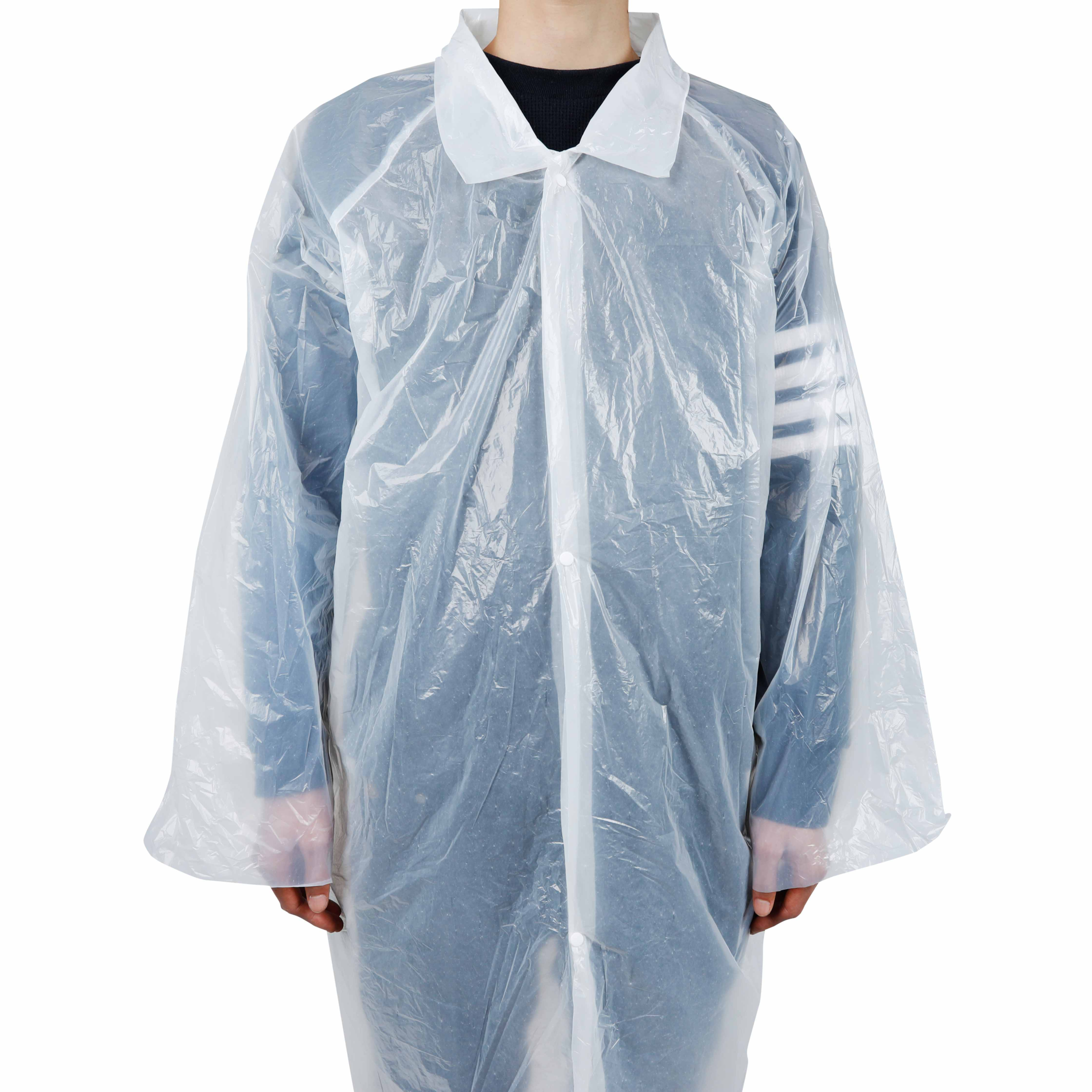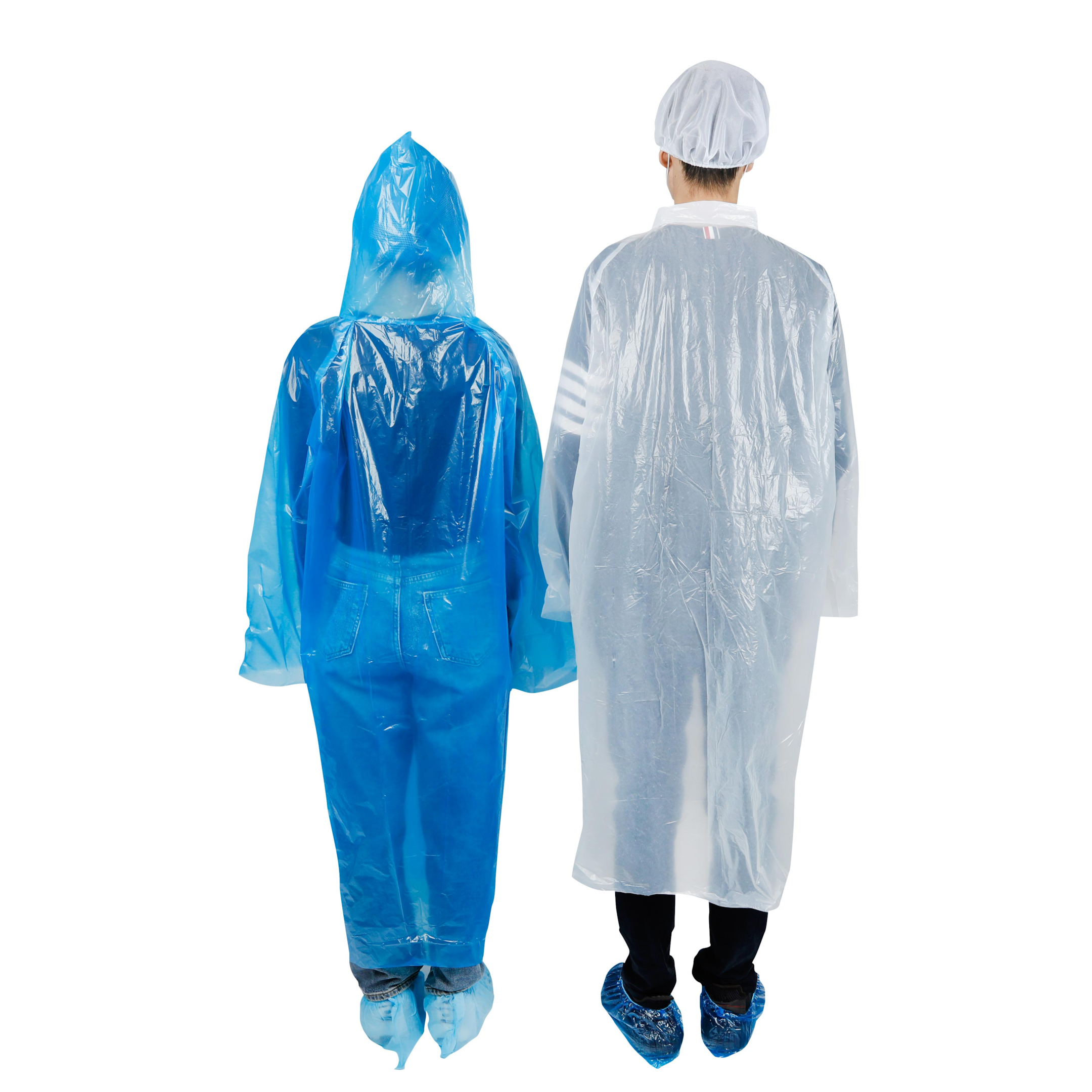Introduction: Understanding the Value of Plastic Lab Coats
In the world of laboratories and research, lab coats are more than a symbol of professionalism. Among the variety of lab coats, the star of our discussion is the plastic lab coat, specifically designed for enhanced safety and utility.

Defining Plastic Lab Coats
Plastic lab coats, often referred to as disposable lab coats, are a staple in many scientific and medical fields. They are commonly made of lightweight, breathable materials that protect the wearer from splashes, spills, and dry particulates.
The Significance of Lab Coats in Laboratories
In laboratories, safety is paramount. Lab coats serve as a primary protective barrier, shielding the wearer and their clothes from potential hazards. It’s about ensuring that you’re protected and can continue your work without concern.

The Shift from Cotton and Polyester to Disposable Lab Coats
Gone are the days when cotton and polyester were the only options for lab coats. Now, disposable lab coats, especially those made of plastic, are gaining popularity. They offer a balance between comfort, safety, and price, making them an ideal choice for many laboratories.
Features of Plastic Lab Coats
Plastic lab coats are packed with features designed to maximize utility and safety.
Lightweight and Comfortable
Despite being durable, plastic lab coats are surprisingly lightweight. This ensures that they are comfortable to wear throughout the day.
Variety of Styles and Sizes: From Small to XL
Plastic lab coats come in a variety of styles, from the classic white to the increasingly popular blue. Sizes range from small to XL, catering to a wide array of body types.
Easy Snap Closures and Patch Pockets
Snaps make it easy to put on and remove the coat, while patch pockets provide handy storage for small items.

The Color Code: Blue vs White Lab Coats
The color of a lab coat is more than a matter of style. Traditionally, white has been the standard, but blue lab coats have grown in popularity because they show stains less visibly.

The Role of Lab Coats in Preventing Cross Contamination
One of the main reasons to wear a lab coat is to prevent cross contamination. With their easy-to-dispose nature, plastic lab coats are ideal for this purpose.
Protective Against Dry Particulates: An Essential Safety Measure
Plastic lab coats protect against dry particulates, such as dust, which can be harmful if inhaled or contaminate an experiment.
Plastic Lab Coats vs Cloth Lab Coats: A Comparative Analysis
Compared to cloth lab coats, plastic ones offer enhanced protection against spills and are easier to dispose of, making them a practical option for many labs.

A durabilidade das batas de laboratório descartáveis
Despite being disposable, plastic lab coats are quite durable. They can withstand a reasonable amount of wear and tear, making them a cost-effective choice for day-to-day lab work.
Pricing Considerations of Plastic Lab Coats
Disposable lab coats are generally more affordable than their cloth counterparts. This, combined with their features and benefits, makes them a wise investment.
Exploring the Unisex Appeal of Lab Coats
Many lab coats, including plastic ones, are unisex. This adds to their practicality, as one style suits all.
Plastic Lab Coats in Remediation Work
Beyond laboratories, plastic lab coats are also commonly used in remediation work where protection from particulates is necessary.
How to Choose the Right Lab Coat for Your Laboratory
When choosing a lab coat, consider its material, durability, features, size, color, and price. Always prioritize safety and comfort.

Conclusion: Plastic Lab Coats as an Investment in Safety
In essence, investing in plastic lab coats is investing in safety. With their numerous features, from easy snaps to breathable materials, they provide invaluable protection in a laboratory setting.
FAQs
- What’s the lifespan of a disposable lab coat?The lifespan of a disposable lab coat can vary depending on usage and the specific tasks for which it’s used. Generally, they are designed to be worn for a single shift, or until they get contaminated.
- Why are blue lab coats becoming popular? Blue lab coats have become popular in recent times due to their practicality. They show stains less visibly, making them suitable for environments where spills are common.
- Are plastic lab coats environmentally friendly? While plastic lab coats are made of synthetic materials, many manufacturers are taking steps to minimize their environmental impact. This can include using recyclable materials or offering recycling programs for used lab coats.
- How do plastic lab coats prevent cross contamination? Plastic lab coats serve as a barrier between the wearer and potential contaminants. As they’re disposable, they can be safely discarded after use, particularly after exposure to hazardous substances, reducing the risk of cross-contamination.
- Can plastic lab coats be used in non-laboratory settings? Yes, plastic lab coats are also used in various non-laboratory settings such as in medical facilities, food processing units, and industrial sites, wherever there’s a need to protect the wearer’s clothing from spills, splashes, or dry particulates.Remember, choosing the right lab coat is a critical decision that can significantly impact your safety at work. Prioritize comfort and protection, and make sure the lab coat you choose aligns with your work requirements.











